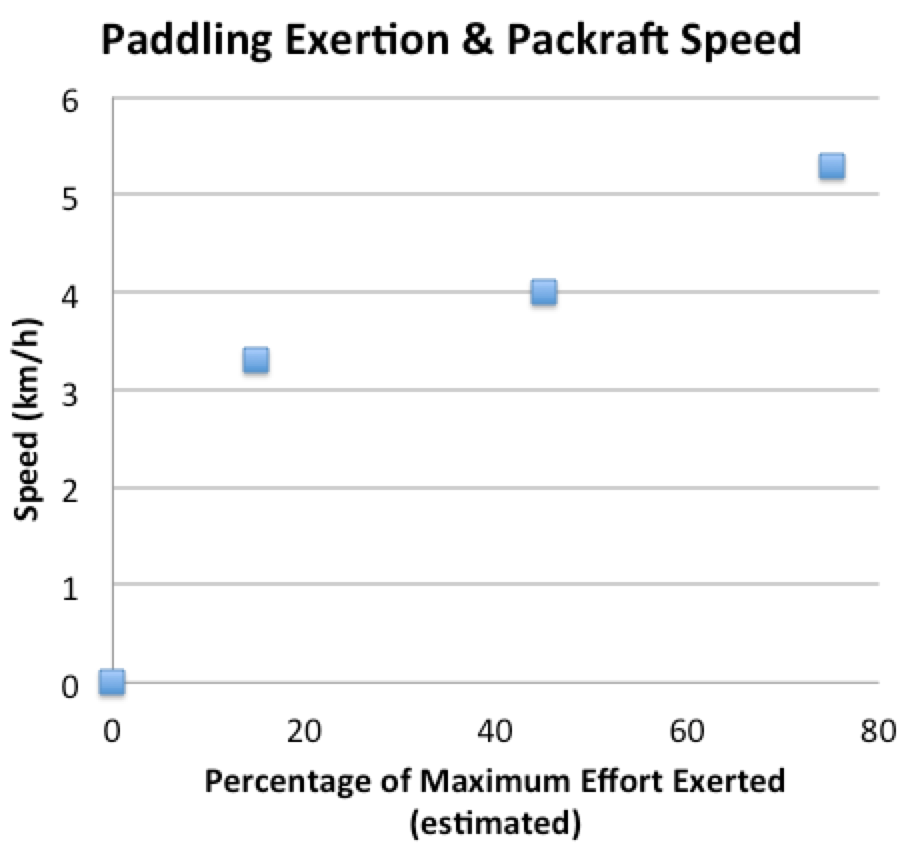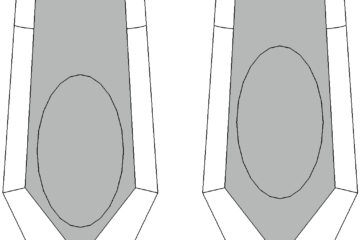For trip planning, it’s important to be able to estimate how much water you can cover in a given amount of time. You need to consider wind and current speeds, of course, (especially if you’re paddling in a river or ocean), but all else being equal, how fast is a packraft?
Recently I took a trip to the coast, and I (of course) brought a V3 DIY Packraft along. While paddling at slack tide one windless day, I used the mountain biking app on my phone to measure my average speed while exerting different amounts of power. After several runs, these were the results:
- Lazy paddling: 3.3 km/h (2 mph)
- Cruising: 4 km/h (2.5 mph)
- Hard paddling: 5.3 km/h (3.3 mph)
“Lazy” paddling was me paddling at about 15% effort, taking gentle paddle strokes and resting between every three or four strokes, but keeping the packraft on track.
“Cruising” is what I consider normal paddling – exerting a moderate amount of effort (maybe 45%), but pausing for short rests between every six or seven strokes and still enjoying the scenery and the silence.
“Hard” paddling is me paddling at the maximum amount of effort I would sustain under normal circumstances, such as catching up with someone, or fighting against a headwind or current – maybe 75% of my maximum power. I wouldn’t want to paddle at this pace for more than about 15 minutes.
I’m not sure how much error there is in my phone’s GPS, but the average speeds were pretty consistent over multiple runs, so I think it’s fairly accurate. The percentage of maximum effort is only a rough estimate (I didn’t use a power meter), so take the numbers with a grain of salt, but the general pattern should hold up for different people in similar packrafts.
What’s interesting to me is the marginal returns of increased effort: the increase in speed from lazy paddling to cruising speed (roughly two to three times the effort) is only 17.5%, and when switching from lazy paddling to hard paddling (roughly five times the effort) the increase in speed is only about 60%. (This is a result of the way water flows around a non-planing hull – drag increases more at higher speeds.)
The lesson here is that unless you’re fighting against a current or a headwind, it’s much more efficient to paddle at a relaxed pace and enjoy the scenery. Cool, huh?


3 Comments
Sebastiaan Elstgeest · August 3, 2021 at 10:57 pm
I’m curious about This too.
I want to use the raft for lakes and ‘flat’ rivers. Occasionally with my child.
-Is the 2person raft better in these conditions? Straighter and faster?
-has the 2 person raft also improved in cunstruction like the skeena?
-can the seat be placed more into the midle, so a skegg/sword would be more beneficial?
Greeting sebastiaan
Matt (Admin) · August 4, 2021 at 8:54 am
The 2-Person model is constructed like the Skeena and the seat can be placed in the middle, but it is slower and more awkward to paddle because it is much longer and wider.
Taylor · March 8, 2018 at 3:52 pm
Anyone have any data on the speed of a 2 person packraft?